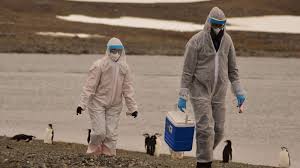H5N1 Outbreak:

The H5N1 outbreak has highlighted critical vulnerabilities in the industrial livestock sector, underlining the imperative for a comprehensive reassessment of animal welfare within India’s environmental and legal frameworks.
- This outbreak reinforces the One Health principle, which integrates public health, ecosystem health, and biodiversity conservation.
- Regular outbreaks of Avian Influenza (bird flu) disrupt production, lead to the culling of birds, and create market panic, impacting consumption.
- ND is another highly contagious viral disease that affects poultry health and productivity.
- Inadequate biosecurity measures in farms and live bird markets facilitate the spread of diseases.
- Chickens in industrial settings are often confined in wired cages, known as ‘battery cages,’ in high densities, leading to overcrowding and stress.
- This practice leads to poor air quality, waste accumulation, and greenhouse gas emissions, contributing to environmental pollution and degradation.
- Volatile prices of crucial poultry feed ingredients, such as corn and soybean meal, not only affect production costs but also exacerbate import dependence due to their significant reliance on imports.
- Rumors and misinformation surrounding poultry products during disease outbreaks can drastically reduce consumption, affecting overall market stability.
- It leads to spoilage and wastage, especially during peak production periods.
- A fragmented supply chain with multiple intermediaries raises transaction costs and lowers farmer profits, while poor transportation infrastructure hampers product movement, affecting delivery times and freshness.




